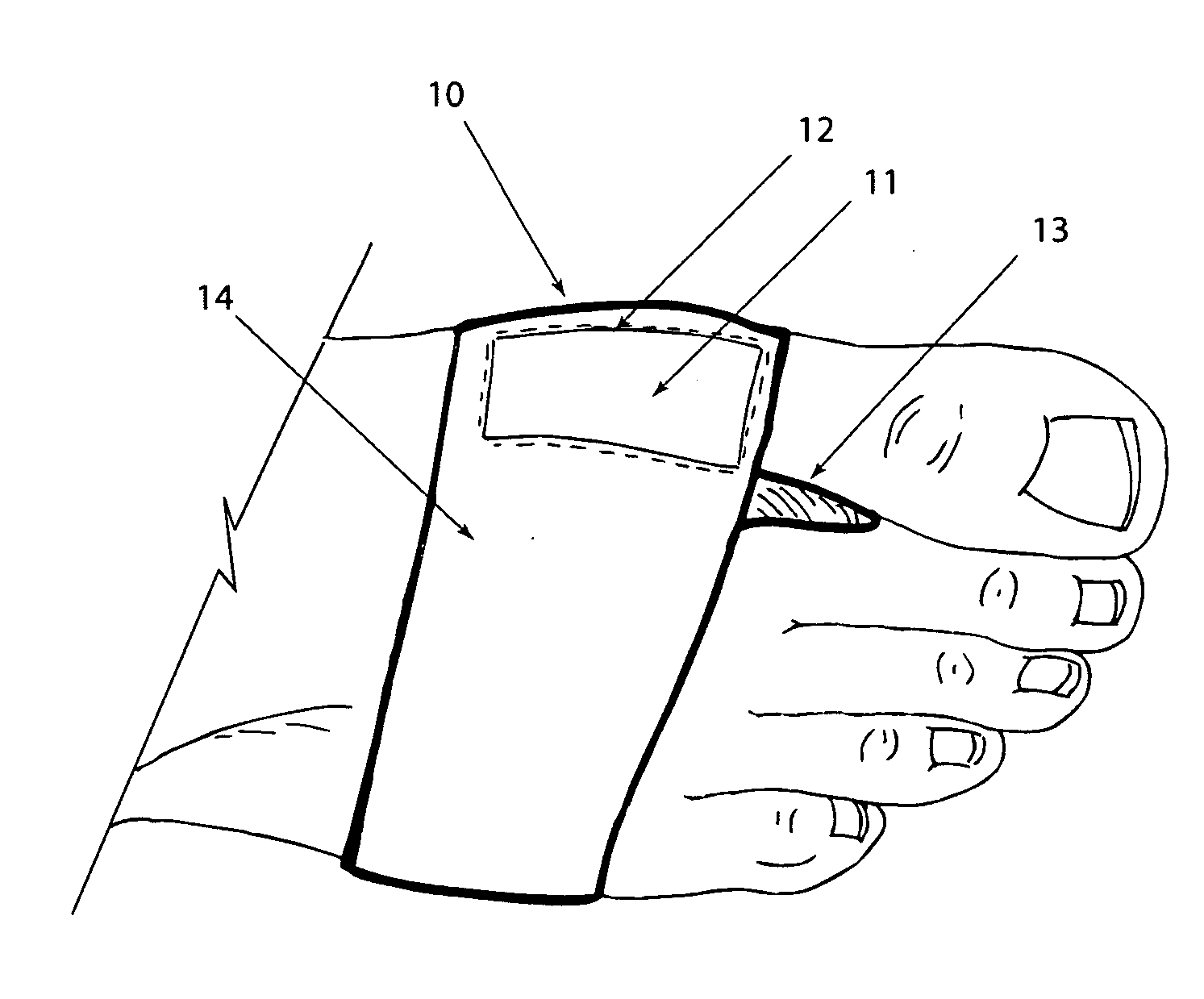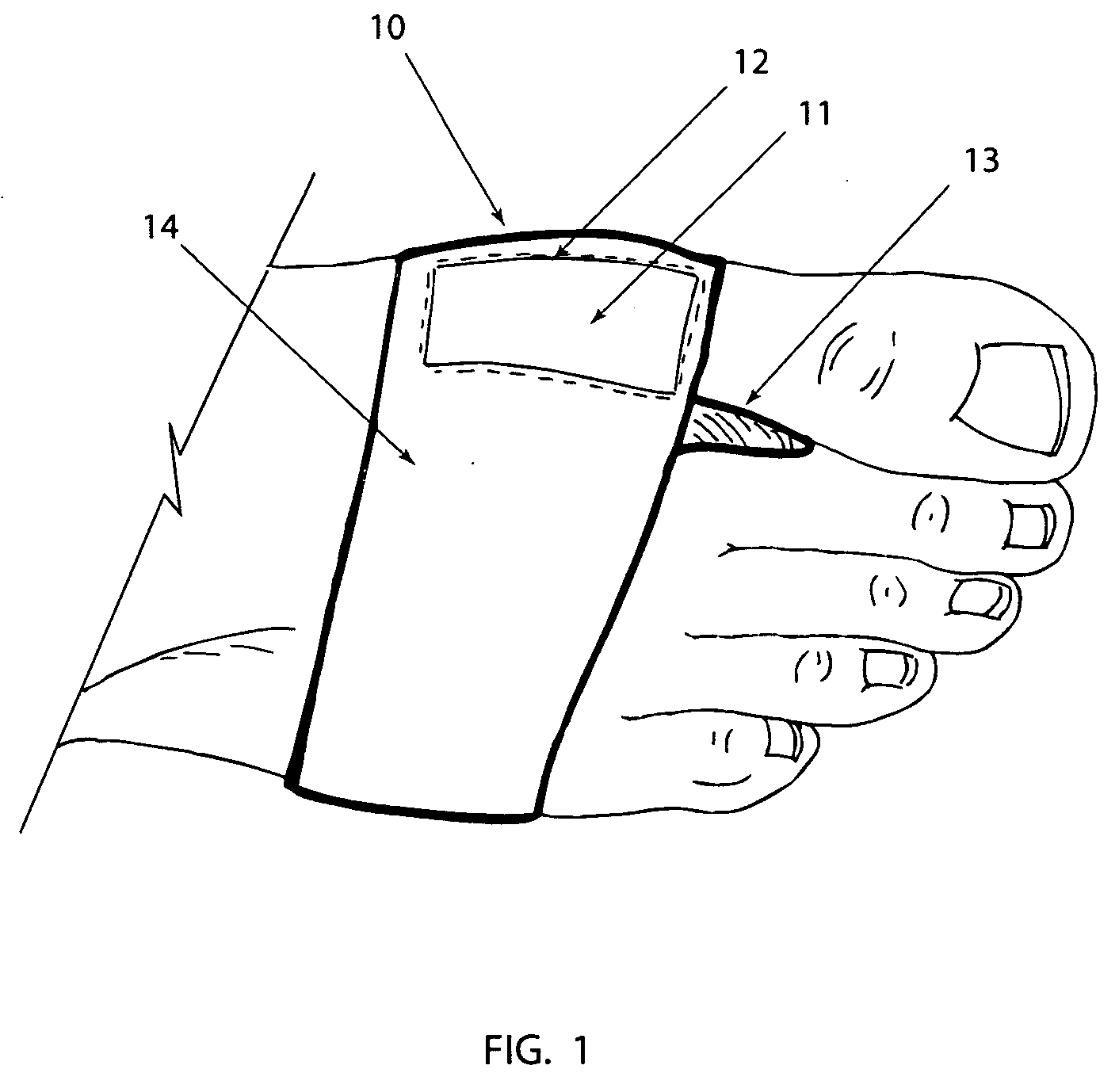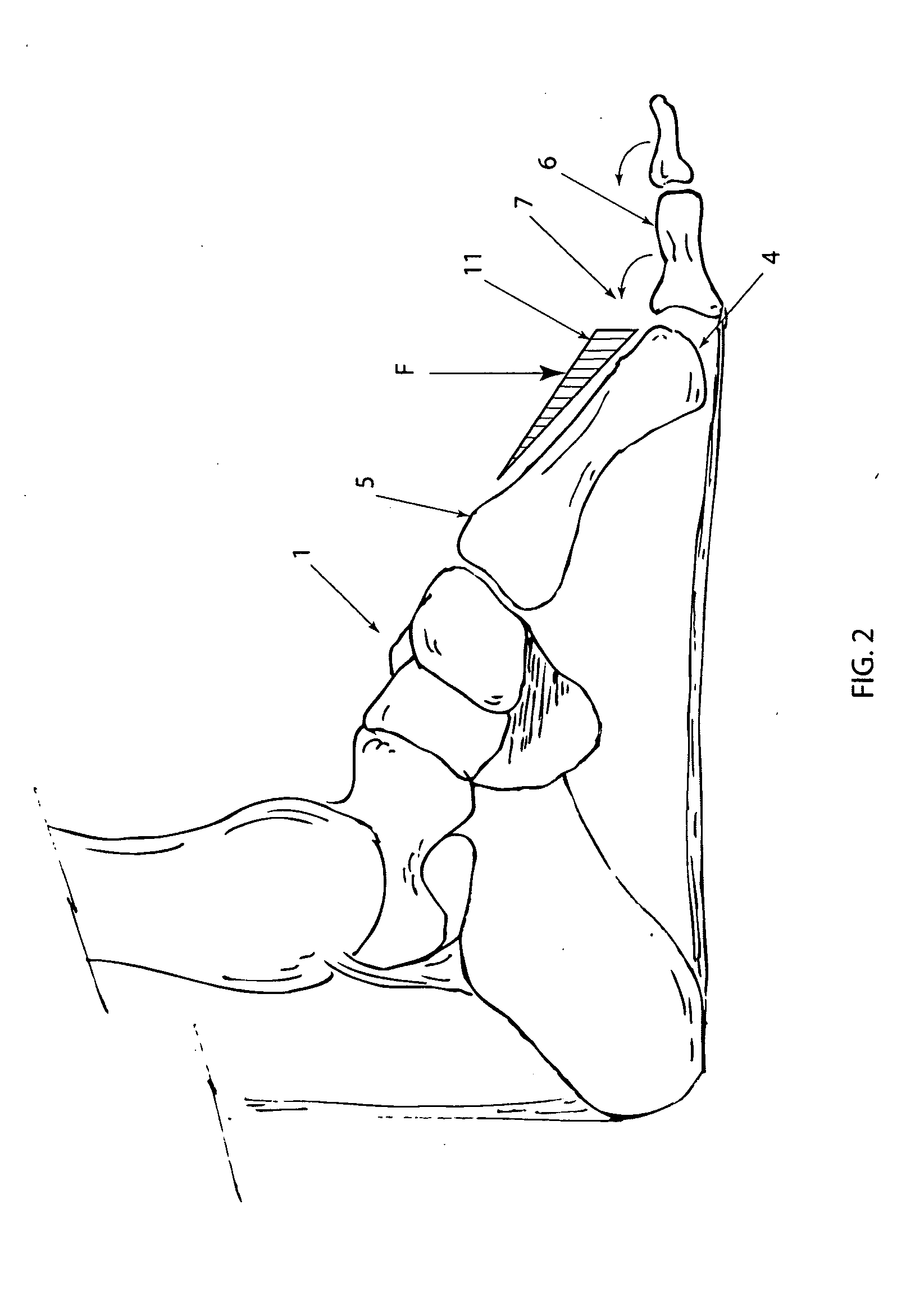Orthotic device and method of use
a technology for supporting devices and forefoots, applied in the field of orthotic support devices for the forefoot, can solve the problems of inability of the hallux to dorsiflex or bend while walking, collapse of the arch, and excessive range of motion
- Summary
- Abstract
- Description
- Claims
- Application Information
AI Technical Summary
Benefits of technology
Problems solved by technology
Method used
Image
Examples
Embodiment Construction
[0022]One embodiment of the metatarsal lock device 10 positioned on forefoot as shown and described in FIG. 1. The metatarsal lock 10 includes, an elastic material strap 14 that surrounds and supports the forefoot, a metatarsal lock pocket 12 formed in the top surface of the elastic strap 14, a metatarsal lock pad 11 is placed or formed into pocket 12. One embodiment may include a toe strap 13 which is positioned between the first and second phalanges of the wearer's foot. The toe strap 13 helps the wearer place the metatarsal lock pad 11 in the proper position, over the first metatarsal, when putting on the metatarsal lock device 10. Additionally, toe strap 13 keeps metatarsal lock pad 11 in proper position during activity and extended use. For one embodiment, pocket 12 is open on along at least one edge, or pocket 12 has a closeable flap, allowing metatarsal lock pad 11 to be removed and replaced with a different pad 11 or to allow the wearer or a podiatrist to remove the pad 11, ...
PUM
 Login to View More
Login to View More Abstract
Description
Claims
Application Information
 Login to View More
Login to View More - R&D
- Intellectual Property
- Life Sciences
- Materials
- Tech Scout
- Unparalleled Data Quality
- Higher Quality Content
- 60% Fewer Hallucinations
Browse by: Latest US Patents, China's latest patents, Technical Efficacy Thesaurus, Application Domain, Technology Topic, Popular Technical Reports.
© 2025 PatSnap. All rights reserved.Legal|Privacy policy|Modern Slavery Act Transparency Statement|Sitemap|About US| Contact US: help@patsnap.com



